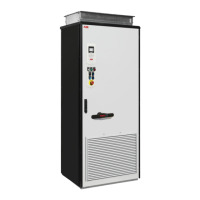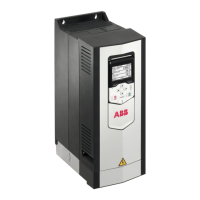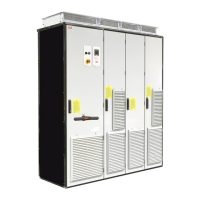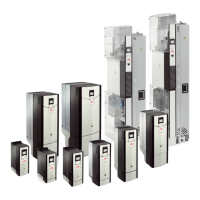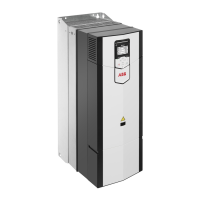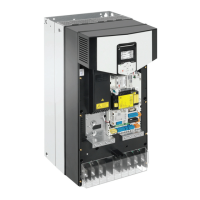Safety data
The safety data for the Safe torque off function is given below.
Note: The safety data is calculated for redundant use, and does not apply if both STO
channels are not used.
T
M
(a)
CCFHFTSCCat.
DC
(%)
MTTF
D
(a)
PFD
avg
(T
1
= 5 a)
PFD
avg
(T
1
= 2 a)
PFH
(T
1
= 20 a)
(1/h)
SFF
(%)
PL
SIL/
SILCL
Frame size
U
N
= 400 V, U
N
= 500 V
2080133≥90103406.02E-052.41E-052.89E-09>99e3
R6
R7
2080133≥9096306.67E-052.67E-053.21E-0999.1e3
R8
R9
2080133≥90195948.01E-053.20E-053.66E-0999.65e3
R10
R11
U
N
= 690 V
2080133≥90100086.66E-052.66E-053.21E-0999.1e3
R6
R7
R8
R9
2080133≥90195948.01E-053.20E-053.66E-0999.65e3
R10
R11
3AXD10000006217 K, 3AXD10000083197 H, 3AXD10000115366 F
• The following temperature profile is used in safety value calculations:
•
670 on/off cycles per year with ΔT = 71.66 °C
•
1340 on/off cycles per year with ΔT = 61.66 °C
•
30 on/off cycles per year with ΔT = 10.0 °C
• 32 °C board temperature at 2.0% of time
• 60 °C board temperature at 1.5% of time
• 85 °C board temperature at 2.3% of time.
• The STO is a type A (frames R6…R9) or type B (frames R10 and R11) safety component
as defined in IEC 61508-2.
• Relevant failure modes:
• The STO trips spuriously (safe failure)
• The STO does not activate when requested
• A fault exclusion on the failure mode “short circuit on printed circuit board” has been
made (EN 13849-2, table D.5). The analysis is based on an assumption that one
failure occurs at one time. No accumulated failures have been analyzed.
The Safe torque off function 257

